What is ransomware?
Panda ransomware virus is a file encrypting type of malware, a variant of the Globe Imposter ransomware. It can enter your computer if you open a malicious email attachment, download programs from unreliable sources or fall for fake updates.
Ransomware is a very dangerous computer infection because it can encrypt files quickly, and their recovery is not always possible. Ransomware creators ask users to pay certain amount of money for file recovery but security researchers usually recommend not paying the ransom. The main reason for that being that there are no guarantees victims will get files back after paying. They would be dealing with cyber criminals who will not feel obligated to help recover files, seeing as they’re the ones who encrypted them in the first place. Instead of complying with the demands, it would be a better idea to just delete Panda ransomware virus. And if you have backup, you can get your files back after you remove Panda ransomware virus.
How does the ransomware behave?
You could have obtained the malware by opening a malicious email attachment. It’s not uncommon that ransomware developers write up a semi-convincing email and attach an infected file to it, which some users do not even hesitate to open. When you get an email from an unknown sender with an attachment, the last thing you should do is carelessly open it. You should look into the sender and examine the contents before you open it. Even if the email looks completely legitimate, be careful. Another common infection method is via downloads from unreliable sources, like Torrents. If you are in need of a program, only download it from legitimate sites. Same goes for updates. Never download updates from banners or ads, because they are never legitimate.
Your files will start being encrypted the moment the ransomware enters your computer. It will add .panda file extension to all encrypted files so you will know which ones have been affected. A ransom note will then be dropped, and it will explain that you have to pay in order to get files back. Once you do, you’re supposed to email them with the ID the ransom note displays, and a decryption key would be sent to you. This is highly doubtful, and cyber crooks should not be trusted. They could easily just take your money and not provide a solution. It would not be the first time. It would be wiser to invest the money into reliable backup, so that if this were to happen again, you would not need to worry about file loss. In any case, paying is not recommended, and instead, you should delete Panda ransomware virus.
Panda ransomware virus removal
To fully remove Panda ransomware virus, you will need to obtain anti-malware software. Manual Panda ransomware virus removal is possible but if you are not very experienced when it comes to computers, it’s not recommended. Unfortunately, anti-malware will only erase Panda ransomware virus, it will not recover your files.
Offers
Download Removal Toolto scan for Panda ransomware virusUse our recommended removal tool to scan for Panda ransomware virus. Trial version of provides detection of computer threats like Panda ransomware virus and assists in its removal for FREE. You can delete detected registry entries, files and processes yourself or purchase a full version.
More information about SpyWarrior and Uninstall Instructions. Please review SpyWarrior EULA and Privacy Policy. SpyWarrior scanner is free. If it detects a malware, purchase its full version to remove it.

WiperSoft Review Details WiperSoft (www.wipersoft.com) is a security tool that provides real-time security from potential threats. Nowadays, many users tend to download free software from the Intern ...
Download|more


Is MacKeeper a virus? MacKeeper is not a virus, nor is it a scam. While there are various opinions about the program on the Internet, a lot of the people who so notoriously hate the program have neve ...
Download|more


While the creators of MalwareBytes anti-malware have not been in this business for long time, they make up for it with their enthusiastic approach. Statistic from such websites like CNET shows that th ...
Download|more
Quick Menu
Step 1. Delete Panda ransomware virus using Safe Mode with Networking.
Remove Panda ransomware virus from Windows 7/Windows Vista/Windows XP
- Click on Start and select Shutdown.
- Choose Restart and click OK.

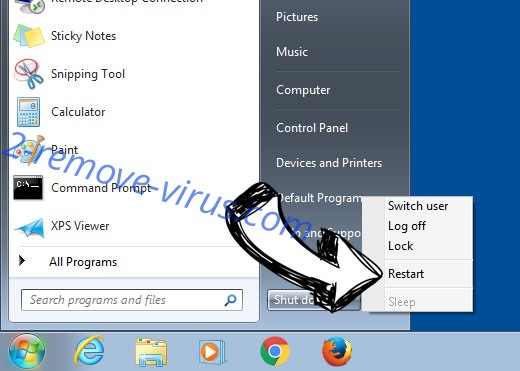
- Start tapping F8 when your PC starts loading.
- Under Advanced Boot Options, choose Safe Mode with Networking.

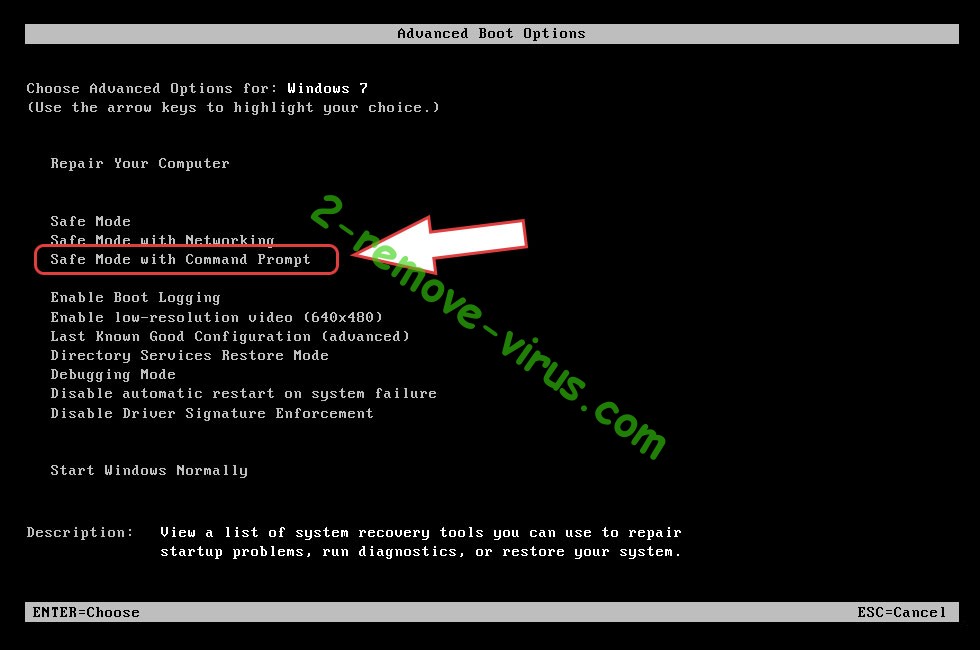
- Open your browser and download the anti-malware utility.
- Use the utility to remove Panda ransomware virus
Remove Panda ransomware virus from Windows 8/Windows 10
- On the Windows login screen, press the Power button.
- Tap and hold Shift and select Restart.

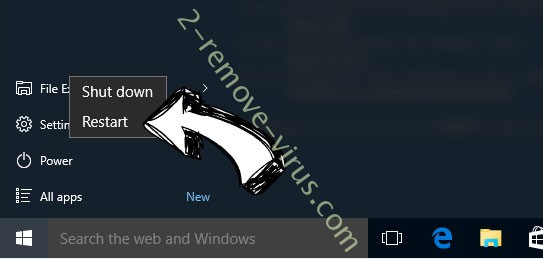
- Go to Troubleshoot → Advanced options → Start Settings.
- Choose Enable Safe Mode or Safe Mode with Networking under Startup Settings.

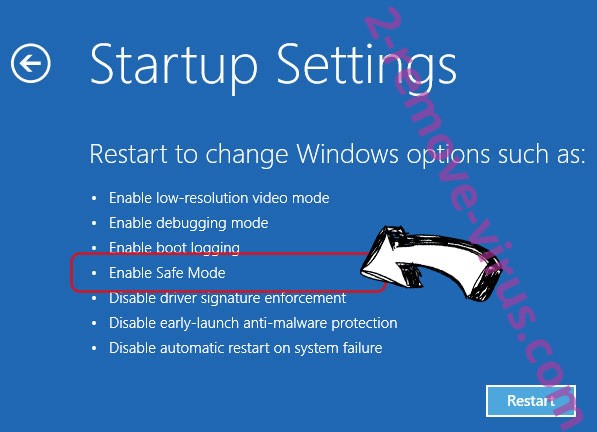
- Click Restart.
- Open your web browser and download the malware remover.
- Use the software to delete Panda ransomware virus
Step 2. Restore Your Files using System Restore
Delete Panda ransomware virus from Windows 7/Windows Vista/Windows XP
- Click Start and choose Shutdown.
- Select Restart and OK


- When your PC starts loading, press F8 repeatedly to open Advanced Boot Options
- Choose Command Prompt from the list.

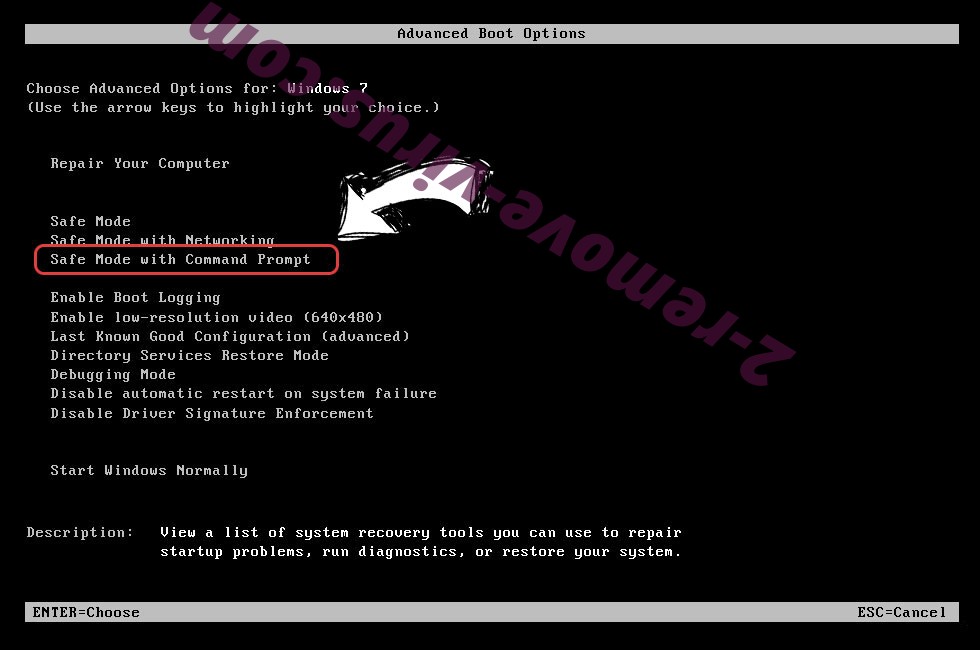
- Type in cd restore and tap Enter.

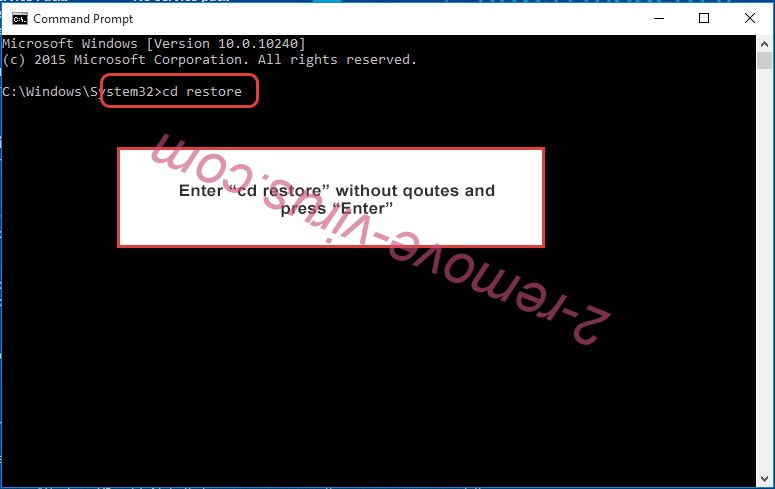
- Type in rstrui.exe and press Enter.

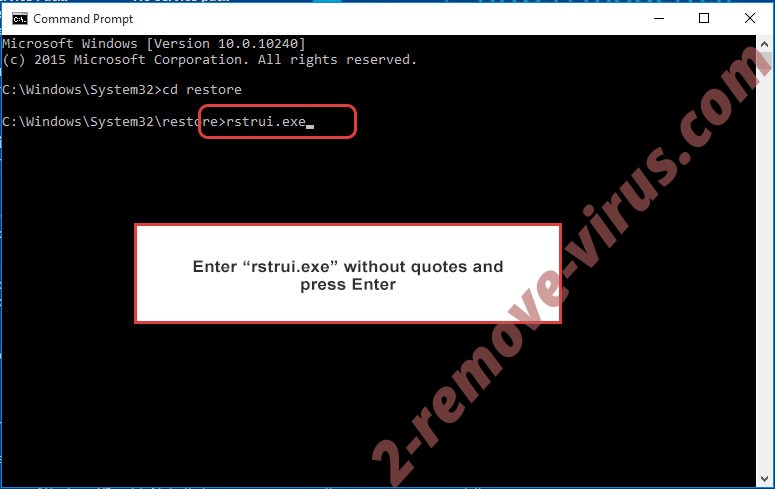
- Click Next in the new window and select the restore point prior to the infection.

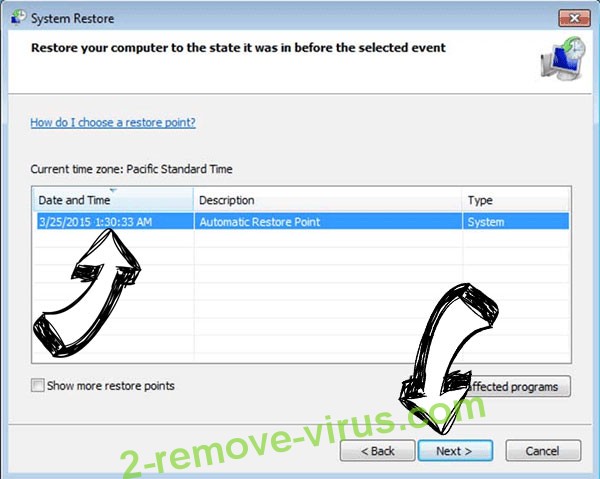
- Click Next again and click Yes to begin the system restore.

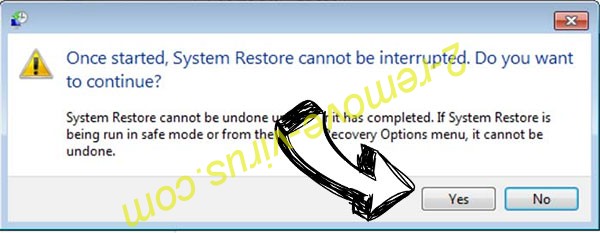
Delete Panda ransomware virus from Windows 8/Windows 10
- Click the Power button on the Windows login screen.
- Press and hold Shift and click Restart.


- Choose Troubleshoot and go to Advanced options.
- Select Command Prompt and click Restart.

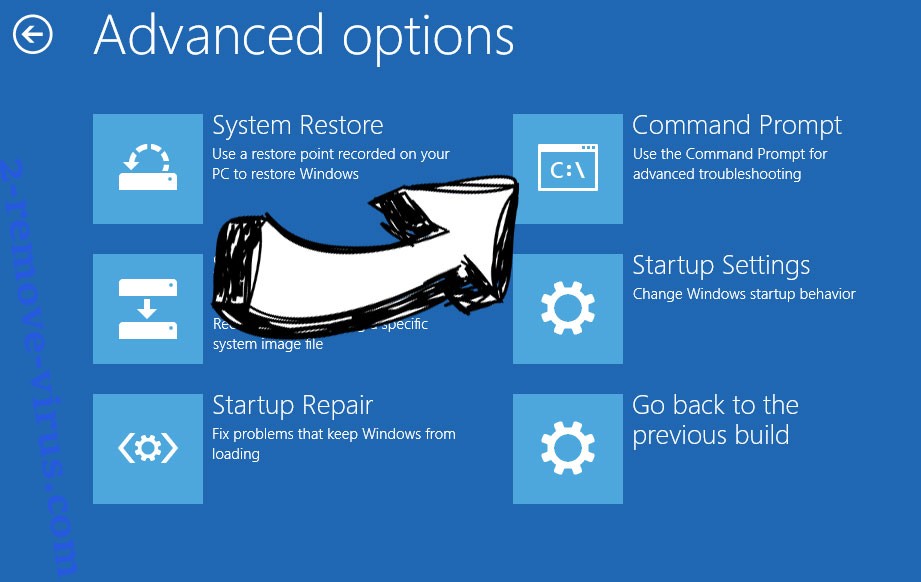
- In Command Prompt, input cd restore and tap Enter.


- Type in rstrui.exe and tap Enter again.


- Click Next in the new System Restore window.

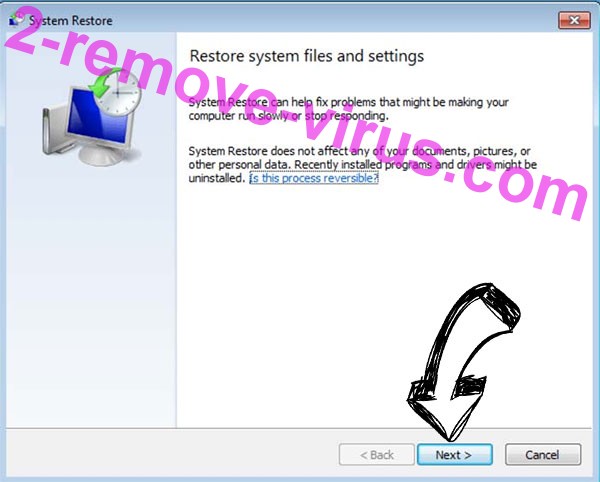
- Choose the restore point prior to the infection.


- Click Next and then click Yes to restore your system.


Site Disclaimer
2-remove-virus.com is not sponsored, owned, affiliated, or linked to malware developers or distributors that are referenced in this article. The article does not promote or endorse any type of malware. We aim at providing useful information that will help computer users to detect and eliminate the unwanted malicious programs from their computers. This can be done manually by following the instructions presented in the article or automatically by implementing the suggested anti-malware tools.
The article is only meant to be used for educational purposes. If you follow the instructions given in the article, you agree to be contracted by the disclaimer. We do not guarantee that the artcile will present you with a solution that removes the malign threats completely. Malware changes constantly, which is why, in some cases, it may be difficult to clean the computer fully by using only the manual removal instructions.

